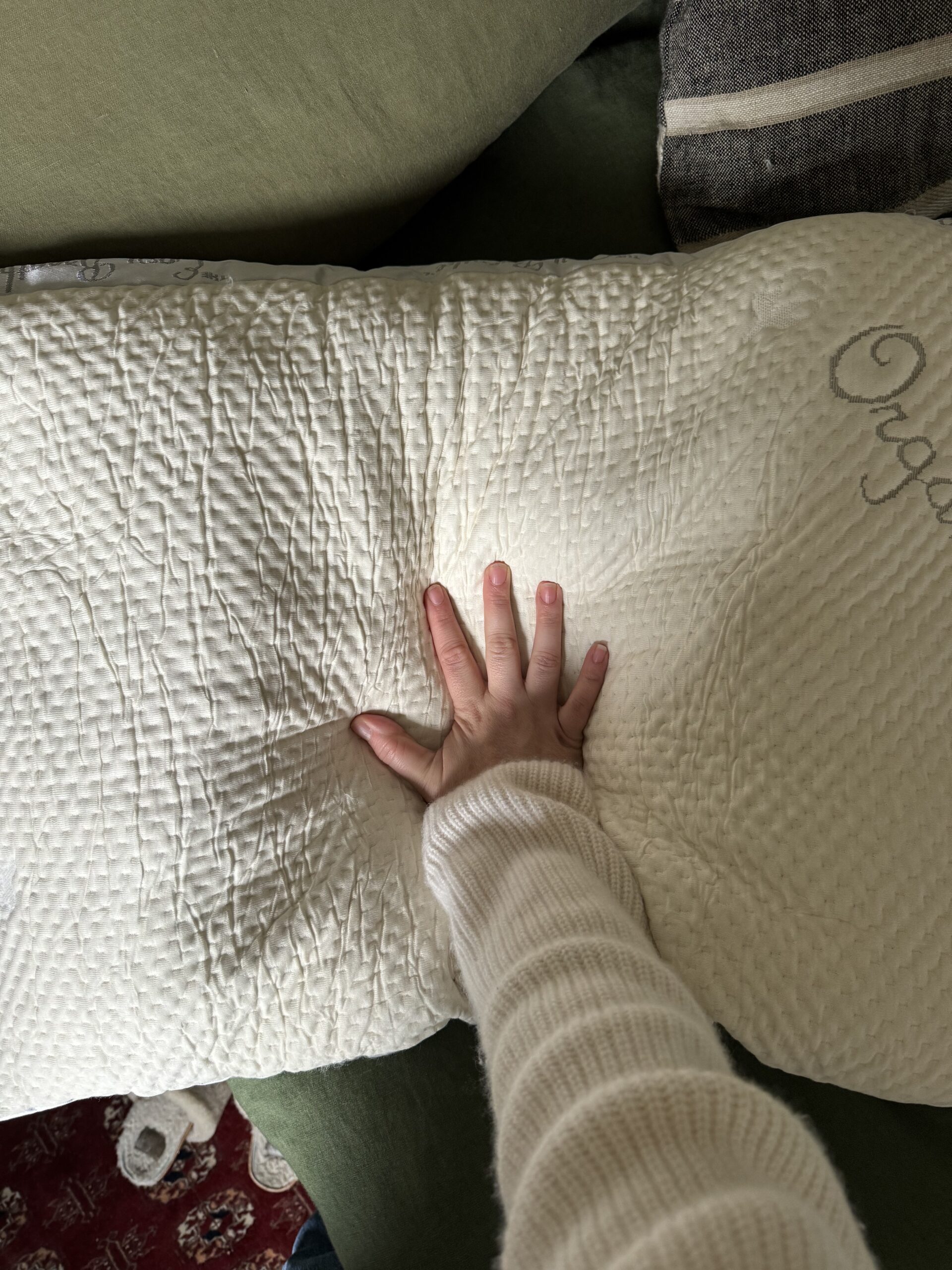
A Beginner’s Guide To DIY Repairs & Home Improvements
I’ve always dreamed of buying a house. Growing up, my home had a vibrant personality—from the infamous Ikea “red kitchen” to a wall-sized underwater mural—both of which are still there today. My own style is quite different as I lean towards neutrals and cozy vibes, but the thought is the same: I can’t wait to have my own space, one I can call my own.
While I’m still a ways away from buying a home (woof, Santa Barbara is expensive), I’m eagerly getting into the ins and outs of home design even with renting. There’s so much out there though and it’s overwhelming. How do I know which projects to take on at a rental? Which home decor magazines and resources are most worth subscribing to? If I only have a small budget, what should I focus on first? And is it really as easy as it looks in this Instagram reel?
So I went right to the experts: What’s most important to know when it comes to maintaining and improving our space? And here’s what they shared about DIY repairs and improvements, including the tools we’ll need, skills to consider, and time to carve out—and when it’s worth turning to the professionals.
What Tools Do I Need?
Not to completely blow minds here, but yes, it’s most important to start with the basics. While we don’t need to necessarily worry about advanced tools for specific projects—such as an engraving dremel we may use once—we do want to be proactive with some basic tools in case of emergencies (like, ahem, plumbing issues).
Most of us don’t exactly enjoy spending $500 on basic tools, but investing in a nice set is worthwhile. Because buying the cheapest equipment often means we’ll spend even more time, energy, and money on completing a project to our liking.
Investing in a nice tool set is worthwhile.
For equipment we’ll only use once every few years, consider borrowing from a friend or reaching out to rental businesses like a local construction warehouse or a chain like Lowes. Renting is great for both budget and quality; most businesses will stock newer, well-maintained equipment solely for renting.
Across the board, the experts I spoke with recommended purchasing a kit that includes:
-
Interchangeable screwdriver with flathead
-
Adjustable wrench
-
Tape measure
-
Pliers
-
Claw hammer
-
Glue and/or duct tape
-
Level
Screwdrivers, wrenches, and hammers are considered essential for any level of carpentry work, while tape measures and levels are extremely helpful in keeping proportions and sizing even.
Along with these “entry-level” tools, most pros suggested investing in a few extras, such as:
-
Cordless drill
-
Stud finder
-
Step ladder
-
Utility knife
-
Saw (For heavy-duty projects like installing trim or flooring, a miter or circular saw may be a better investment, but a hand saw or hacksaw is a great place to start.)
For decorative projects, landscaping, and overall aesthetics, we’re encouraged to have a few of these tools at our disposal, depending on our needs and budget:
-
Paint trays
-
Brushes and rollers
-
Painter’s tape
-
Bleach
-
Carpet cleaner or vacuum
-
Mop
-
Power washer
-
Axe
-
Hand trowel
-
Lawn mower
What Skills Do I Have?
I am, shall we say, not very graceful; I don’t have great hand-eye coordination and I trip easily. So I’m probably not a great candidate for updating light fixtures, roofing repairs, or adjusting electrical wires. Instead, I’m better suited for painting, gardening, and designing.
Similarly, our comfort (or risk) level, skill set, and expertise should guide the DIY projects we decide to move forward with. Andre Kazimierski, CEO of Improovy, a nationwide provider of on-demand painting services, says that most external and decorative home improvements can likely be done ourselves: “Don’t be afraid to DIY what you’re comfortable with, but anything requiring expertise is worth paying a professional for.”
This usually means knowing how to patch and paint but leaving plumbing, HVAC, gas, and electrical projects to the experts. Plus, some home jobs require certifications, permits, or licenses, which is especially important to research. A good rule of thumb is the higher the risk involved (to us or our home), the more we should find a professional.
Don’t be afraid to DIY what you’re comfortable with. That said, it can be worth hiring a professional for their expertise.
In my experience, I’ve definitely needed to know how to patch drywall and find studs. Additionally, changing locks and doorknobs, putting up shelves and studs, fixing window screens, and basic plumbing like unclogging a toilet or repairing a leaky faucet are helpful skills to keep in the ol’ DIY arsenal.
For more advanced projects, YouTube or TikTok videos, especially from brands like Lowes, are a handy resource. But when it comes to these step-by-step guides, Eric Phillips of Dripfina reminds us, “Don’t make the common mistake of working chronologically without checking out future steps.” Otherwise, we won’t know what’s to come and could end up giving up halfway through. Other resources he recommends are Apartment Therapy, The Spruce, and local hardware store staff.
What Is My Budget?
It doesn’t matter if we’re new fixer-uppers or seasoned pros, home renovations and repairs can be extremely expensive. This means budgeting is a necessary step no matter which route we decide to take.
There’s no point in being conservative in DIY budgets […] because we’ll inevitably need wiggle room.
Phillips likes to start by breaking down projects into three ranges: under $50, $50 to $150, or $150+. On jobs under $50, he’ll get started right away, whereas jobs between $50 and $150 will receive an itemized budget. For anything above that range, he’ll consider whether it’s cheaper, easier, and more efficient to simply hire a professional. There’s no point in being conservative in DIY budgets either, he says, because we’ll inevitably need wiggle room, especially for any mistakes.
What should we include in our budget? Factor in hard costs like tools to purchase or rent, hardware like nails or screws, and the cost of materials. We can also consider the time spent on learning new skills or how many hours the entire task will take, because our time is valuable! If we find that the project would take more time than we have but we have specific materials in mind, seek out contractors who’ll happily work with what we provide.
How Much Time Do I Have?
We’ve spent the money and time, prepped with tools and step-by-step videos, and are ready to get to work. Here’s where it gets fun!
The most important tip to keep in mind here is to always budget for more time than we think we’ll need, especially if we’re new to the DIY game. Instead of starting a project at 9 PM (sorry to my husband), schedule a couple of hours at once. Go at a slow-and-steady pace, watch and rewatch videos and guides, take breaks, and budget time for potential mishaps as needed.
We can even consider starting critical projects on weekdays so that if something goes awry, we won’t have to pay more for emergency professionals over the weekend.
Go at a slow-and-steady pace, watch and rewatch videos and guides, take breaks, and budget time for potential mishaps.
DIY projects can seem intimidating at first, but it’s so empowering to see our skills grow and our home transform. Start small, be patient, and celebrate the little wins—that’s what I’ll be doing, too, and cheering you on every step of the way.
Henah Velez (she/her) is the Senior Editor at Money with Katie at Morning Brew, as well as a writer at The Good Trade. She holds a Master’s in Social Entrepreneurship and is a proud Rutgers grad. Originally from NJ, Henah’s now in the Bay Area where she loves shopping small, hanging with her pets, or traveling. Say hi on Instagram!




